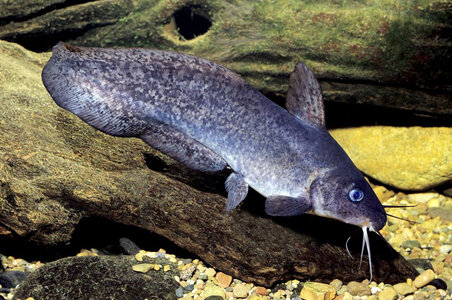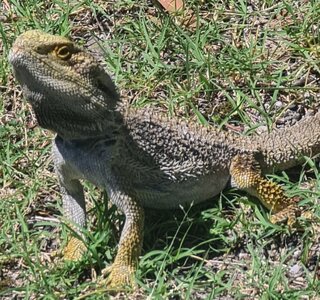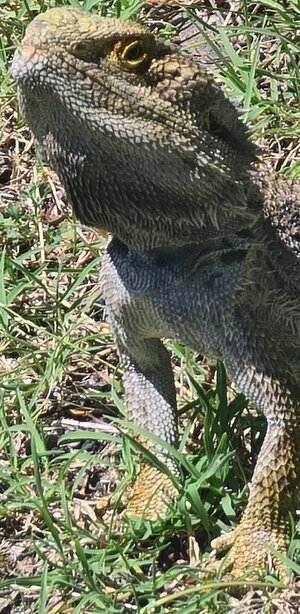You are using an out of date browser. It may not display this or other websites correctly.
You should upgrade or use an alternative browser.
You should upgrade or use an alternative browser.
Zookeeper Gabe’s Animal Thread Vol 10.0
- Thread starter Zookeeper Gabe
- Start date
- Joined
- Jun 27, 2013
- Messages
- 19,890
- Reaction score
- 18,430
- Joined
- Aug 25, 2021
- Messages
- 6,922
- Reaction score
- 16,009
Call me Ishmael.
- Joined
- Jul 23, 2011
- Messages
- 32,233
- Reaction score
- 18,047
Australian, so eel tailed catfish Tandanus tandanus .
View attachment 1028088
Bit of a ugly chap and a small fellow compared to us catfish. But most dams starting from scratch fish wise. Needed something more reliable than me for improving water quality
We have smaller catfish, like the yellow bullhead that only gets 60cm. There are so many different catfish out there. It's an old statistic, so things might have changed, but 1 out 20 vertebrate species are catfish. There's over 3000 different species.
I'd love to go to Australia and catch my own Gertrudes' Rainbowfish
Last edited:
- Joined
- Jan 23, 2006
- Messages
- 11,561
- Reaction score
- 13,086
We have smaller catfish, like the yellow bullhead that only gets 60cm. There are so many different catfish out there. It's an old statistic, so things might have changed, but 1 out 20 vertebrate species are catfish. There's over 3000 different species.
I'd love to go to Australia and catch my own Gertrudes' Rainbowfish

That's a pretty crazy catfish stat.
Eel-tailed catfish commonly grow to about 50.0 centimetres (19.7 in) and weigh about 1.8 kilograms (4.0 lb). Fish of this species may grow up to about 90.0 cm (35.4 in) and weigh up to 6.0 kg (13.2 lb). Eel-tailed catfish may live up to about 8 years.
Pretty short life quick growing for catfish
Other fish I've put in
Silver perch - This species can grow up to 8 kg and 61 cm, however they more commonly reach 410 mm and 2.5 kg.
Golden perch - Golden Perch have been recorded up to 76 cm in length and 23 kg in weight. However, they are commonly measured between 40-50 cm in length and 5 kg in weight.
Murray Cod - Australia's largest freshwater fish. The biggest recorded was 1.8m long and weighed 113kg! The cod's size depends on its habitat, with those living in smaller waterways reaching at least 60cm and between 3kg to 4kg. In larger waterways they grow to 100 cm or more and weigh up to 20kg
Of course there's no way mine will be hitting the upper limits of those sizes as in dams. But all native to this region and all good eating so pretty happy
Last edited:
- Joined
- Aug 22, 2010
- Messages
- 32,732
- Reaction score
- 9,870
- Joined
- Jan 17, 2010
- Messages
- 4,522
- Reaction score
- 5,483
- Joined
- Mar 4, 2023
- Messages
- 5,326
- Reaction score
- 8,623
In Alaska, a grown female moose stomped a man to death after being harassed with snow balls.
Dude probably bullied her as a pup, revenge must have been sweet.
Despise people that are cruel to any critter, on land, water, or anywhere.
Despise people that are cruel to any critter, on land, water, or anywhere.
- Joined
- Feb 15, 2006
- Messages
- 1,273
- Reaction score
- 1,399
That is one majestic little dude. Wish we had similar wildlife here.Came across this fellow mowing today. One of the prettiest bearded dragons I've seen. Love the yellow feet n headView attachment 1028486View attachment 1028487
- Joined
- Aug 17, 2018
- Messages
- 40,418
- Reaction score
- 89,530
- Joined
- Jan 17, 2010
- Messages
- 4,522
- Reaction score
- 5,483
It takes two … or does it? Charlotte the single stingray pregnant with pups
US stingray with no male companion expected to give birth to up to four offspring via rare phenomenon of parthenogenesis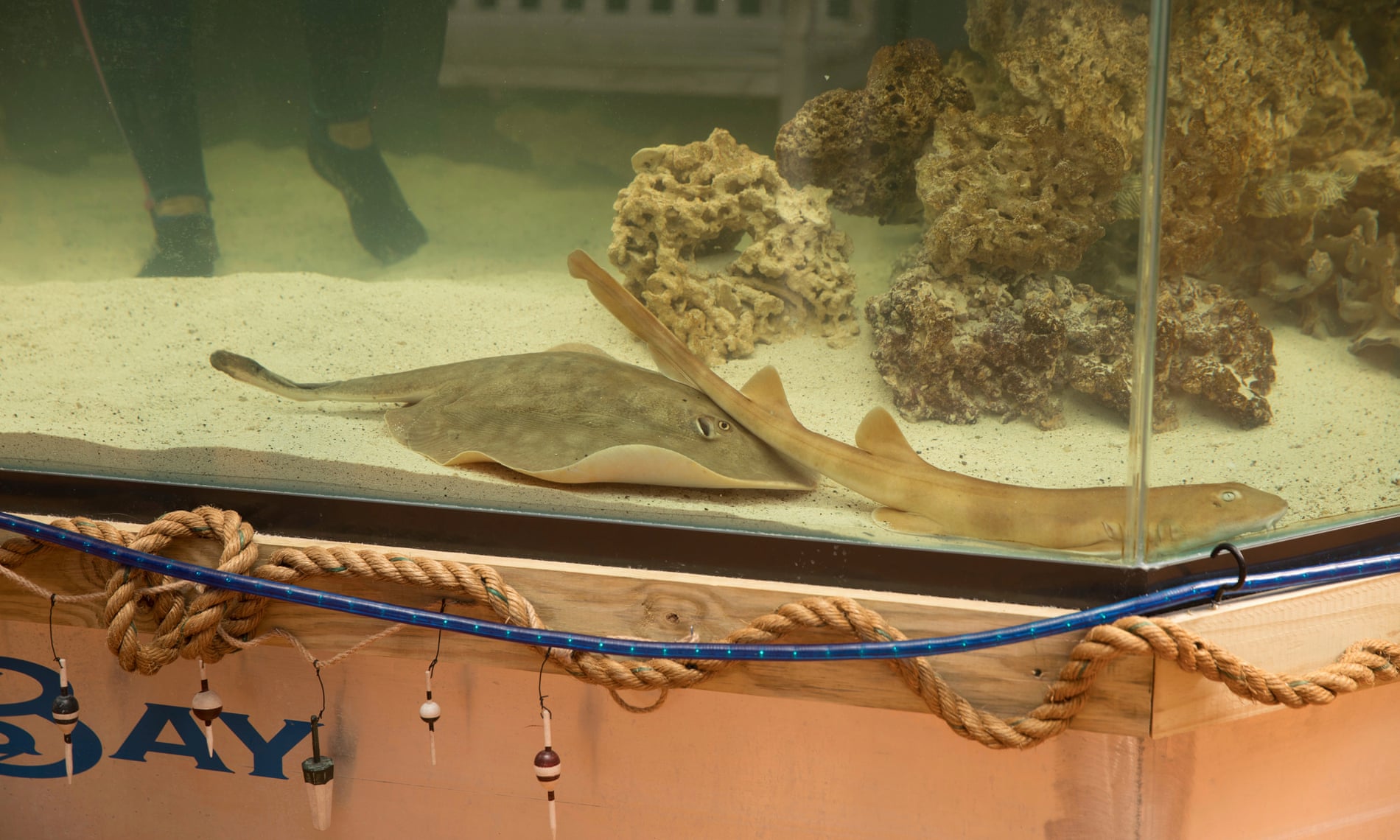
Charlotte, a rust-colored stingray the size of a serving platter, has spent much of her life gliding around the confines of a storefront aquarium in North Carolina’s Appalachian Mountains.
She’s 2,300 miles (3,700km) from her natural habitat under the waves off southern California. She hasn’t shared a tank of water with a male of her species in at least eight years.
Yet nature has found a way, the aquarium’s owner said: the stingray is pregnant with as many as four pups and could give birth in the next two weeks.
“Here’s our girl saying: ‘Hey, happy Valentine’s Day! Let’s have some pups!’” said Brenda Ramer, executive director of the Aquarium and Shark Lab on Main Street in downtown Hendersonville.
An expert on the stingrays said it would have been impossible for Charlotte to have mated with one of the five small sharks that share her tank, despite news reports suggesting that was the case after Ramer joked about a possible interspecies hookup.
The small aquarium is run by Ramer’s educational nonprofit, Team Ecco, which encourages local schoolchildren and others to take an interest in science.
Its biggest lesson now is on the process of parthenogenesis: a type of asexual reproduction in which offspring develop from unfertilized eggs, meaning there is no genetic contribution by a male.
The mostly rare phenomenon can occur in some insects, fish, amphibians, birds and reptiles, but not mammals. Documented examples have included California condors, Komodo dragons and yellow-bellied water snakes.
Kady Lyons, a research scientist at the Georgia Aquarium in Atlanta who is not involved with the North Carolina aquarium, said Charlotte’s pregnancy is the only documented example she’s aware of for this species, round stingrays.
But Lyons isn’t at all shocked. Other kinds of sharks, skates and rays – a trio of animals often grouped together – have had these kinds of pregnancies in human care.
“I’m not surprised, because nature finds a way of having this happen,” she said.
To be clear, Lyons said, these animals are not cloning themselves. Instead, a female’s egg fuses with another cell, triggers cell division and leads to the creation of an embryo.
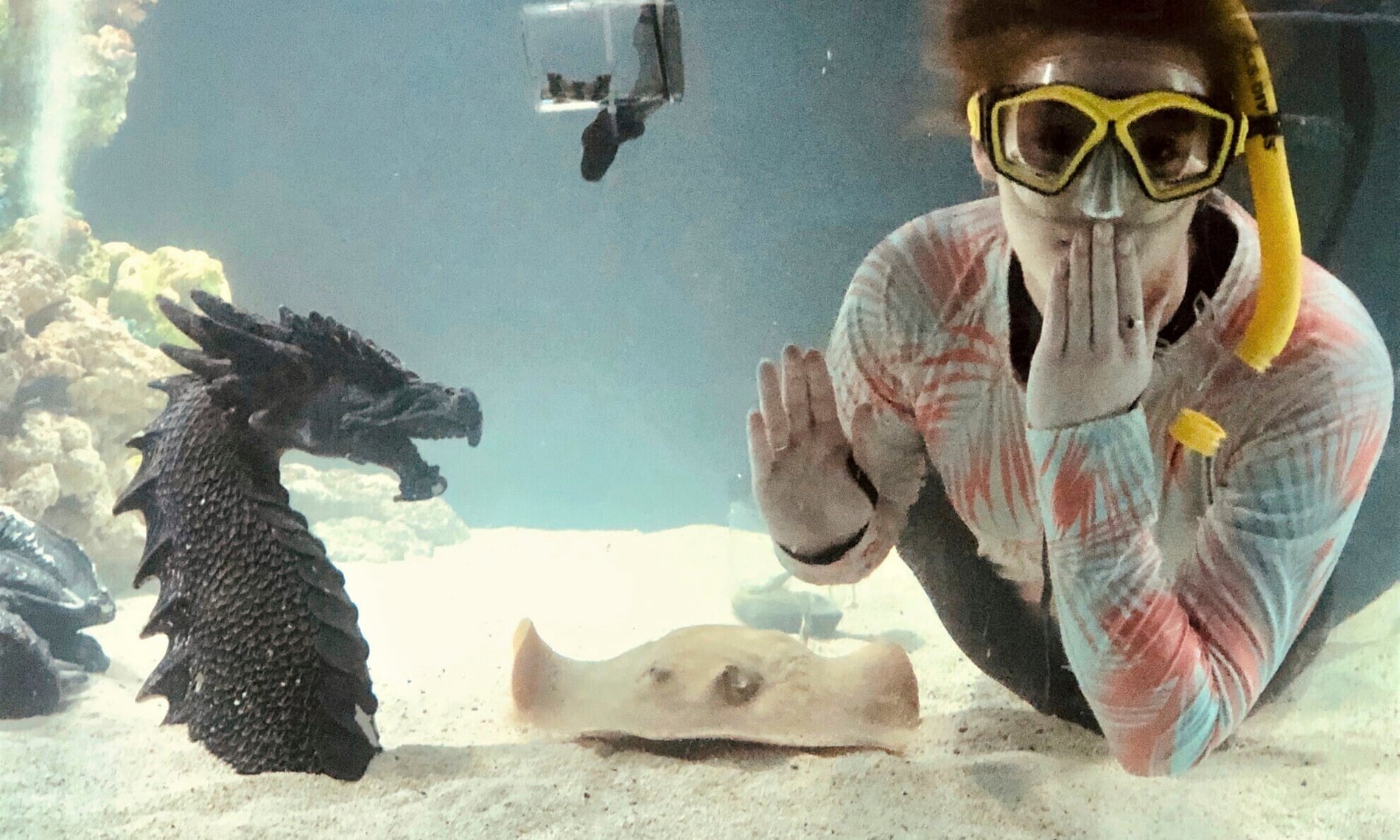
Kinsley Boyette of the Team Ecco lab in the tank with Charlotte. Photograph: AP
The cell that fuses with the egg is known as a polar body. They are produced when a female is creating an egg but usually aren’t used.
“We don’t know why it happens,” Lyons said. “Just that it’s kind of this really neat phenomenon that they seem to be able to do.”
Ramer said she and others at the nonprofit at first thought that Charlotte had a tumor when they noticed a lump on her back that was “blowing up like a biscuit”. But an ultrasound revealed her pregnancy.
“We were all like: ‘Shut the back door. There’s no way,’” Ramer said. “We thought we were overfeeding her. But we were overfeeding her because she has more mouths to feed.”
Charlotte currently lives in a tank that’s about 2,200 gallons (8,300 liters), or nearly the size of a construction dumpster. Ramer said they’re hoping to get a tank nearly twice that size to accommodate Charlotte’s offspring. They also want to put live cameras up for people to see them.
“It is very rare to happen,” Ramer said. “But it’s happening in the middle of the Blue Ridge Mountains in rural North Carolina, hundreds of miles from the ocean.”
As for the suggestion that Charlotte could have been impregnated by a shark, Lyons said that’s impossible. Besides being different sizes, the animals wouldn’t match up anatomically. Neither would their DNA.
“We should set the record straight that there aren’t some shark-ray shenanigans happening here,” said Lyons, whose graduate work focused on the species.
Round stingrays such as Charlotte are abundant on the Pacific coasts of southern California and Mexico, often resting on the ocean’s sandy bottom near the shoreline.
In the wild they are typically the size of a small dinner plate, and their name comes from their circular shape. They come in all shades of brown. They eat small worms, crabs and mollusks, and they are preyed upon by certain types of sharks, seals and giant sea bass.
They’re well known to humans because of their painful sting, often resulting from a beachgoer’s foot stepping on them. Southern California lifeguards encourage people to do the so-called stingray shuffle as they wade through the water, in large part because of round stingrays.
Lyons finds the species fascinating. For example, embryos in the womb are bathed in uterine milk that provides nutrients to help them develop.
“I’m glad the round stingray is getting the media attention that it deserves,” Lyons said. “It’s not necessarily as sexy as a white shark, but they do a lot of really neat stuff.”
https://www.theguardian.com/world/2024/feb/14/charlotte-stingray-pregnant-pups-north-carolina
- Joined
- Jul 23, 2011
- Messages
- 32,233
- Reaction score
- 18,047
It takes two … or does it? Charlotte the single stingray pregnant with pups
US stingray with no male companion expected to give birth to up to four offspring via rare phenomenon of parthenogenesis

Charlotte, a rust-colored stingray the size of a serving platter, has spent much of her life gliding around the confines of a storefront aquarium in North Carolina’s Appalachian Mountains.
She’s 2,300 miles (3,700km) from her natural habitat under the waves off southern California. She hasn’t shared a tank of water with a male of her species in at least eight years.
Yet nature has found a way, the aquarium’s owner said: the stingray is pregnant with as many as four pups and could give birth in the next two weeks.
“Here’s our girl saying: ‘Hey, happy Valentine’s Day! Let’s have some pups!’” said Brenda Ramer, executive director of the Aquarium and Shark Lab on Main Street in downtown Hendersonville.
An expert on the stingrays said it would have been impossible for Charlotte to have mated with one of the five small sharks that share her tank, despite news reports suggesting that was the case after Ramer joked about a possible interspecies hookup.
The small aquarium is run by Ramer’s educational nonprofit, Team Ecco, which encourages local schoolchildren and others to take an interest in science.
Its biggest lesson now is on the process of parthenogenesis: a type of asexual reproduction in which offspring develop from unfertilized eggs, meaning there is no genetic contribution by a male.
The mostly rare phenomenon can occur in some insects, fish, amphibians, birds and reptiles, but not mammals. Documented examples have included California condors, Komodo dragons and yellow-bellied water snakes.
Kady Lyons, a research scientist at the Georgia Aquarium in Atlanta who is not involved with the North Carolina aquarium, said Charlotte’s pregnancy is the only documented example she’s aware of for this species, round stingrays.
But Lyons isn’t at all shocked. Other kinds of sharks, skates and rays – a trio of animals often grouped together – have had these kinds of pregnancies in human care.
“I’m not surprised, because nature finds a way of having this happen,” she said.
To be clear, Lyons said, these animals are not cloning themselves. Instead, a female’s egg fuses with another cell, triggers cell division and leads to the creation of an embryo.

Kinsley Boyette of the Team Ecco lab in the tank with Charlotte. Photograph: AP
The cell that fuses with the egg is known as a polar body. They are produced when a female is creating an egg but usually aren’t used.
“We don’t know why it happens,” Lyons said. “Just that it’s kind of this really neat phenomenon that they seem to be able to do.”
Ramer said she and others at the nonprofit at first thought that Charlotte had a tumor when they noticed a lump on her back that was “blowing up like a biscuit”. But an ultrasound revealed her pregnancy.
“We were all like: ‘Shut the back door. There’s no way,’” Ramer said. “We thought we were overfeeding her. But we were overfeeding her because she has more mouths to feed.”
Charlotte currently lives in a tank that’s about 2,200 gallons (8,300 liters), or nearly the size of a construction dumpster. Ramer said they’re hoping to get a tank nearly twice that size to accommodate Charlotte’s offspring. They also want to put live cameras up for people to see them.
“It is very rare to happen,” Ramer said. “But it’s happening in the middle of the Blue Ridge Mountains in rural North Carolina, hundreds of miles from the ocean.”
As for the suggestion that Charlotte could have been impregnated by a shark, Lyons said that’s impossible. Besides being different sizes, the animals wouldn’t match up anatomically. Neither would their DNA.
“We should set the record straight that there aren’t some shark-ray shenanigans happening here,” said Lyons, whose graduate work focused on the species.
Round stingrays such as Charlotte are abundant on the Pacific coasts of southern California and Mexico, often resting on the ocean’s sandy bottom near the shoreline.
In the wild they are typically the size of a small dinner plate, and their name comes from their circular shape. They come in all shades of brown. They eat small worms, crabs and mollusks, and they are preyed upon by certain types of sharks, seals and giant sea bass.
They’re well known to humans because of their painful sting, often resulting from a beachgoer’s foot stepping on them. Southern California lifeguards encourage people to do the so-called stingray shuffle as they wade through the water, in large part because of round stingrays.
Lyons finds the species fascinating. For example, embryos in the womb are bathed in uterine milk that provides nutrients to help them develop.
“I’m glad the round stingray is getting the media attention that it deserves,” Lyons said. “It’s not necessarily as sexy as a white shark, but they do a lot of really neat stuff.”
https://www.theguardian.com/world/2024/feb/14/charlotte-stingray-pregnant-pups-north-carolina
If they had other animals in her tank, like the sharks mentioned in the article, that were chewing on her disk, that could have driven her to produce an "egg".
Male stingrays are pretty aggressive while mating. Males will bite the female, then flip the female over to do the deed. It's not uncommon to see breeding females with ragged edges that were caused by a male's bite.
- Joined
- Mar 4, 2023
- Messages
- 5,326
- Reaction score
- 8,623
Always been fascinated with reptiles. They are amazing and watching them in nature is a blast. After they stalk their prey, they pounce on it like a mini dinosaur, they shake their head while chomping it to get their meal. Totally cool predators !Came across this fellow mowing today. One of the prettiest bearded dragons I've seen. Love the yellow feet n headView attachment 1028486View attachment 1028487
- Joined
- Jul 23, 2011
- Messages
- 32,233
- Reaction score
- 18,047
That's a pretty crazy catfish stat.
Eel-tailed catfish commonly grow to about 50.0 centimetres (19.7 in) and weigh about 1.8 kilograms (4.0 lb). Fish of this species may grow up to about 90.0 cm (35.4 in) and weigh up to 6.0 kg (13.2 lb). Eel-tailed catfish may live up to about 8 years.
Pretty short life quick growing for catfish
Other fish I've put in
Silver perch - This species can grow up to 8 kg and 61 cm, however they more commonly reach 410 mm and 2.5 kg.
Golden perch - Golden Perch have been recorded up to 76 cm in length and 23 kg in weight. However, they are commonly measured between 40-50 cm in length and 5 kg in weight.
Murray Cod - Australia's largest freshwater fish. The biggest recorded was 1.8m long and weighed 113kg! The cod's size depends on its habitat, with those living in smaller waterways reaching at least 60cm and between 3kg to 4kg. In larger waterways they grow to 100 cm or more and weigh up to 20kg
Of course there's no way mine will be hitting the upper limits of those sizes as in dams. But all native to this region and all good eating so pretty happy
Do you have problems with yabbies burrowing and destroying your dams?
- Joined
- Jan 23, 2006
- Messages
- 11,561
- Reaction score
- 13,086
Do you have problems with yabbies burrowing and destroying your dams?
Unfortunately yes. Ones completely trashed but I'm lucky . The largest is springfed from underground and the 2 below it are more natural overflow dams persay than large walled dams. [ don't know if that makes sense ]
But the ruined one has large man made walls that r fucked n leak. The others are more... flat?
Really don't know If that's a good explanation
Last edited:
- Joined
- Jul 23, 2011
- Messages
- 32,233
- Reaction score
- 18,047
Unfortunately yes. Ones completely trashed but I'm lucky . The largest is springfed from underground and the 2 below it are more natural overflow dams persay than large walled dams. [ don't know if that makes sense ]
But the ruined one has large man made walls that r fucked n leak. The others are more... flat?
Really don't know If that's a good explanation
I get what you're saying.
I'm assuming you're talking about Cherax Destructor. Murican crayfish have nothing on the monsters you have.
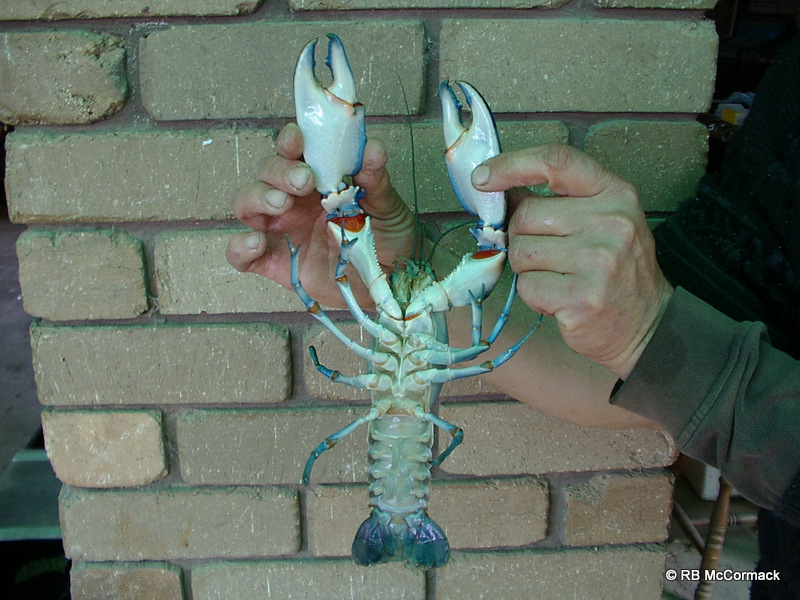
Look at the size of that thing! A foot long crayfish is nuts.
I really want to get one of the colors morphs, but they require such a huge tank just to house one animal.

- Joined
- Jan 23, 2006
- Messages
- 11,561
- Reaction score
- 13,086
I get what you're saying.
I'm assuming you're talking about Cherax Destructor. Murican crayfish have nothing on the monsters you have.

Look at the size of that thing! A foot long crayfish is nuts.
I really want to get one of the colors morphs, but they require such a huge tank just to house one animal.
S
Those are extremely pretty wow
- Joined
- Apr 11, 2015
- Messages
- 18,949
- Reaction score
- 13,334
But this does'nt explain the black dragonIt takes two … or does it? Charlotte the single stingray pregnant with pups
US stingray with no male companion expected to give birth to up to four offspring via rare phenomenon of parthenogenesis

Charlotte, a rust-colored stingray the size of a serving platter, has spent much of her life gliding around the confines of a storefront aquarium in North Carolina’s Appalachian Mountains.
She’s 2,300 miles (3,700km) from her natural habitat under the waves off southern California. She hasn’t shared a tank of water with a male of her species in at least eight years.
Yet nature has found a way, the aquarium’s owner said: the stingray is pregnant with as many as four pups and could give birth in the next two weeks.
“Here’s our girl saying: ‘Hey, happy Valentine’s Day! Let’s have some pups!’” said Brenda Ramer, executive director of the Aquarium and Shark Lab on Main Street in downtown Hendersonville.
An expert on the stingrays said it would have been impossible for Charlotte to have mated with one of the five small sharks that share her tank, despite news reports suggesting that was the case after Ramer joked about a possible interspecies hookup.
The small aquarium is run by Ramer’s educational nonprofit, Team Ecco, which encourages local schoolchildren and others to take an interest in science.
Its biggest lesson now is on the process of parthenogenesis: a type of asexual reproduction in which offspring develop from unfertilized eggs, meaning there is no genetic contribution by a male.
The mostly rare phenomenon can occur in some insects, fish, amphibians, birds and reptiles, but not mammals. Documented examples have included California condors, Komodo dragons and yellow-bellied water snakes.
Kady Lyons, a research scientist at the Georgia Aquarium in Atlanta who is not involved with the North Carolina aquarium, said Charlotte’s pregnancy is the only documented example she’s aware of for this species, round stingrays.
But Lyons isn’t at all shocked. Other kinds of sharks, skates and rays – a trio of animals often grouped together – have had these kinds of pregnancies in human care.
“I’m not surprised, because nature finds a way of having this happen,” she said.
To be clear, Lyons said, these animals are not cloning themselves. Instead, a female’s egg fuses with another cell, triggers cell division and leads to the creation of an embryo.

Kinsley Boyette of the Team Ecco lab in the tank with Charlotte. Photograph: AP
The cell that fuses with the egg is known as a polar body. They are produced when a female is creating an egg but usually aren’t used.
“We don’t know why it happens,” Lyons said. “Just that it’s kind of this really neat phenomenon that they seem to be able to do.”
Ramer said she and others at the nonprofit at first thought that Charlotte had a tumor when they noticed a lump on her back that was “blowing up like a biscuit”. But an ultrasound revealed her pregnancy.
“We were all like: ‘Shut the back door. There’s no way,’” Ramer said. “We thought we were overfeeding her. But we were overfeeding her because she has more mouths to feed.”
Charlotte currently lives in a tank that’s about 2,200 gallons (8,300 liters), or nearly the size of a construction dumpster. Ramer said they’re hoping to get a tank nearly twice that size to accommodate Charlotte’s offspring. They also want to put live cameras up for people to see them.
“It is very rare to happen,” Ramer said. “But it’s happening in the middle of the Blue Ridge Mountains in rural North Carolina, hundreds of miles from the ocean.”
As for the suggestion that Charlotte could have been impregnated by a shark, Lyons said that’s impossible. Besides being different sizes, the animals wouldn’t match up anatomically. Neither would their DNA.
“We should set the record straight that there aren’t some shark-ray shenanigans happening here,” said Lyons, whose graduate work focused on the species.
Round stingrays such as Charlotte are abundant on the Pacific coasts of southern California and Mexico, often resting on the ocean’s sandy bottom near the shoreline.
In the wild they are typically the size of a small dinner plate, and their name comes from their circular shape. They come in all shades of brown. They eat small worms, crabs and mollusks, and they are preyed upon by certain types of sharks, seals and giant sea bass.
They’re well known to humans because of their painful sting, often resulting from a beachgoer’s foot stepping on them. Southern California lifeguards encourage people to do the so-called stingray shuffle as they wade through the water, in large part because of round stingrays.
Lyons finds the species fascinating. For example, embryos in the womb are bathed in uterine milk that provides nutrients to help them develop.
“I’m glad the round stingray is getting the media attention that it deserves,” Lyons said. “It’s not necessarily as sexy as a white shark, but they do a lot of really neat stuff.”
https://www.theguardian.com/world/2024/feb/14/charlotte-stingray-pregnant-pups-north-carolina
Latest posts
-
The welterweight belt is the only one to have never been hold by a Brazilian
- Latest: Ladder Master
-


